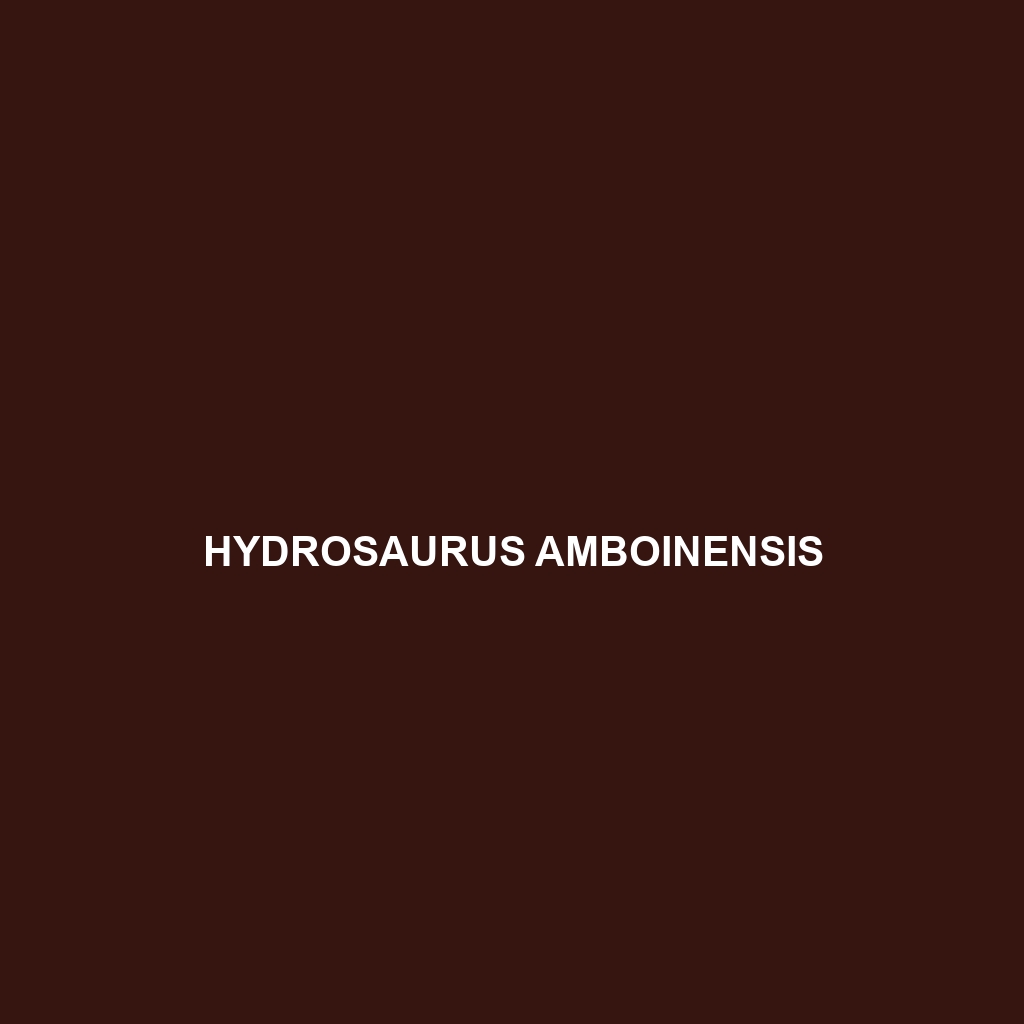Common Name
Hydrosaurus amboinensis
Scientific Name
Hydrosaurus amboinensis
Habitat
Hydrosaurus amboinensis, commonly known as the Pacific water dragon or the Amboina water dragon, primarily inhabits tropical and subtropical regions. This fascinating species is predominantly found across the islands of Southeast Asia, including Indonesia, the Philippines, and Papua New Guinea. Hydrosaurus amboinensis thrives in a variety of—often humid—environments, such as rainforests, mangroves, and close to marine habitats where freshwater bodies like rivers, streams, and ponds are present. These lizards are well-adapted to a semi-aquatic lifestyle, showcasing their preference for climates that provide ample moisture and secluded basking spots along the water’s edge.
Physical Characteristics
In terms of physical appearance, Hydrosaurus amboinensis typically reaches an impressive length of 45 to 70 cm (approximately 18 to 28 inches) from snout to tail. The species is characterized by its distinctively elongated body, broad head, and long limbs. Their coloration varies, exhibiting vibrant greens and browns which allow them to blend harmoniously into their lush surroundings. One notable feature is the pronounced dorsal crest that runs along their back, which can help in thermoregulation and social signaling. Males are generally larger than females and possess more pronounced crests, adding to their visual appeal during mating displays.
Behavior
The behavioral ecology of Hydrosaurus amboinensis is intriguing, particularly their semi-aquatic nature. During the day, these reptiles are often found lounging on branches or rocks near the water, soaking up sunlight. This species exhibits a unique form of escape behavior; when threatened, they are adept swimmers and can easily dive into the water to avoid predators. Hydrosaurus amboinensis engages in social interactions, especially during the breeding season, where males perform elaborate displays involving head bobs and changes in coloration to attract females. Their social structure tends to be loosely organized, with occasionally dominant males establishing territories.
Diet
Hydrosaurus amboinensis is primarily an omnivore, which allows it to adapt to varying food availability within its habitat. Its diet consists of a wide range of items, including fruits, leaves, flowers, and small insects. They have been observed foraging primarily in trees and on the ground, utilizing their keen eyesight to spot food from a distance. The ability to consume both plant matter and protein sources like insects aids in their overall adaptability and survival within their ecological niche.
Reproduction
The reproductive cycle of Hydrosaurus amboinensis typically occurs during the warm months, when temperatures reach their peak. Mating rituals are marked by robust displays of aggression and courtship between males, including head bobbing and displays of strength. After successful courtship, females lay clutches of up to 15 eggs in sandy soils or decaying organic matter, which then incubate for approximately 70 to 90 days. Once hatched, the young lizards are independent and begin their life cycle, mimicking adult behaviors as they integrate into their surrounding environment.
Conservation Status
The current conservation status of Hydrosaurus amboinensis is classified as Least Concern by the International Union for Conservation of Nature (IUCN). Their adaptable nature and wide geographical range help maintain stable population levels. However, local threats such as habitat destruction, deforestation, and illegal pet trade pose significant challenges to their long-term survival. Conservation efforts involving habitat preservation and environmental education are essential to safeguard this species.
Interesting Facts
One of the most intriguing aspects of Hydrosaurus amboinensis is its unique ability to swim efficiently, allowing it to escape from predators and navigate through its habitat with ease. Their long tails serve as powerful propulsion aids while swimming. Additionally, some individuals have been observed displaying unique coloration variations, depending on environmental factors, showcasing their adaptability. Historically, these water dragons have also been part of local folklore and traditions, adding a cultural significance to their presence in various regions.
Role in Ecosystem
Hydrosaurus amboinensis plays a crucial role in its ecosystem, contributing to both pollination and serving as a predator of various insect populations. Their feeding habits promote plant growth by dispersing seeds undigested, thereby facilitating the spread of plant species throughout their habitat. As both prey and predator, they are integral to maintaining ecological balance. Their presence signals a healthy environment, illustrating the importance of habitat conservation efforts to sustain their populations as well as the overall health of the ecosystems they inhabit.
